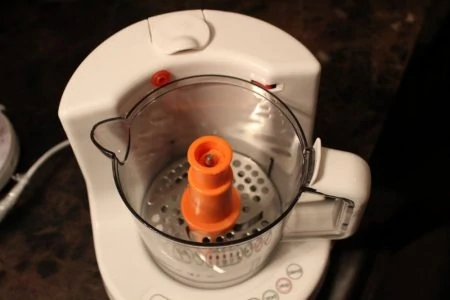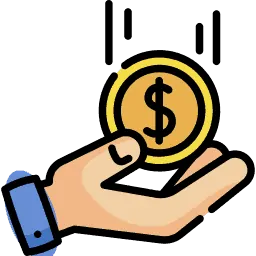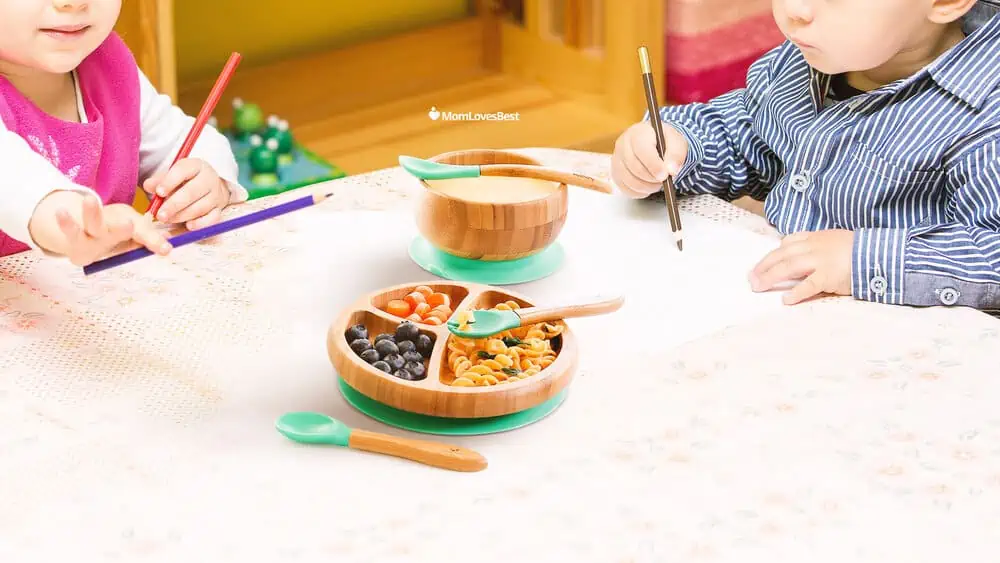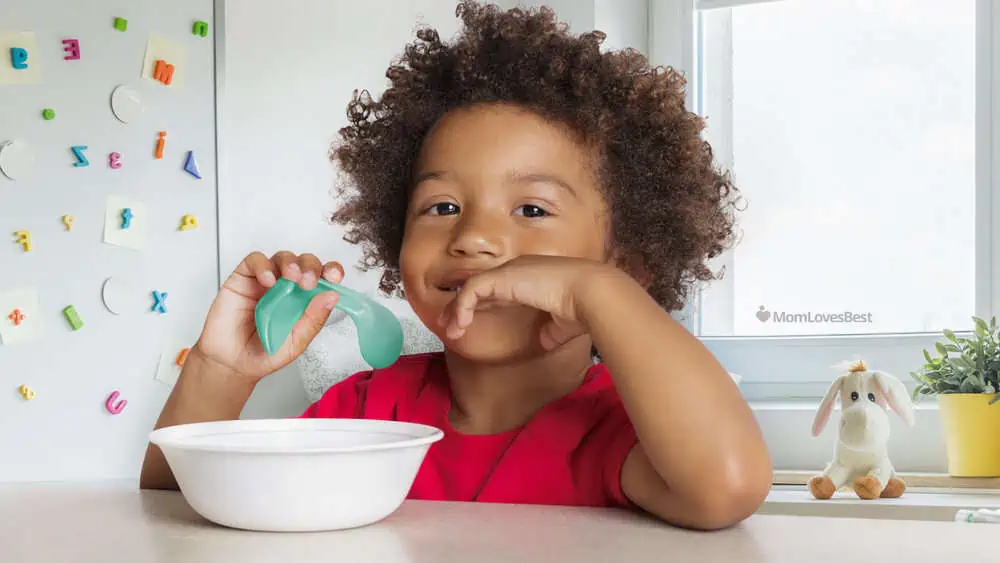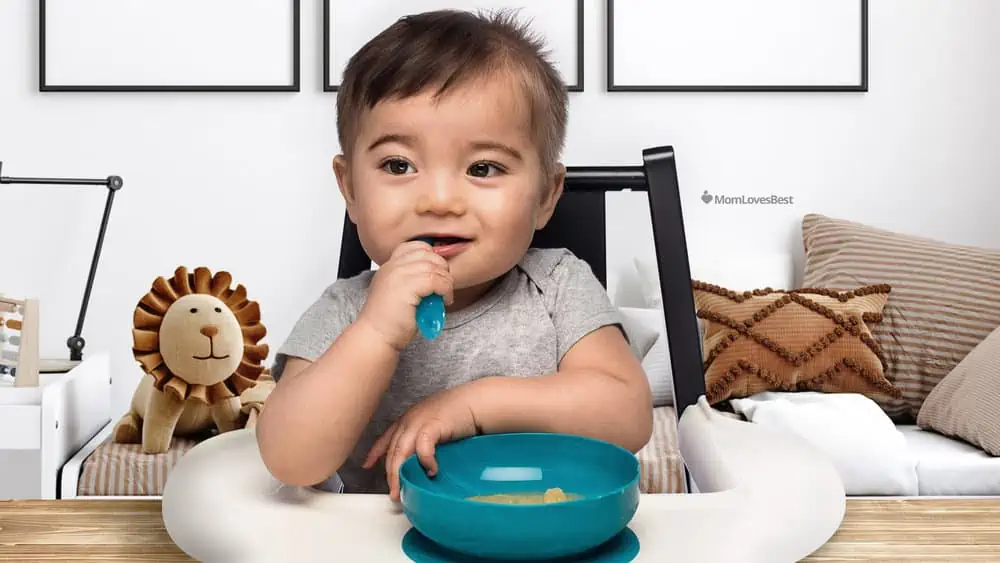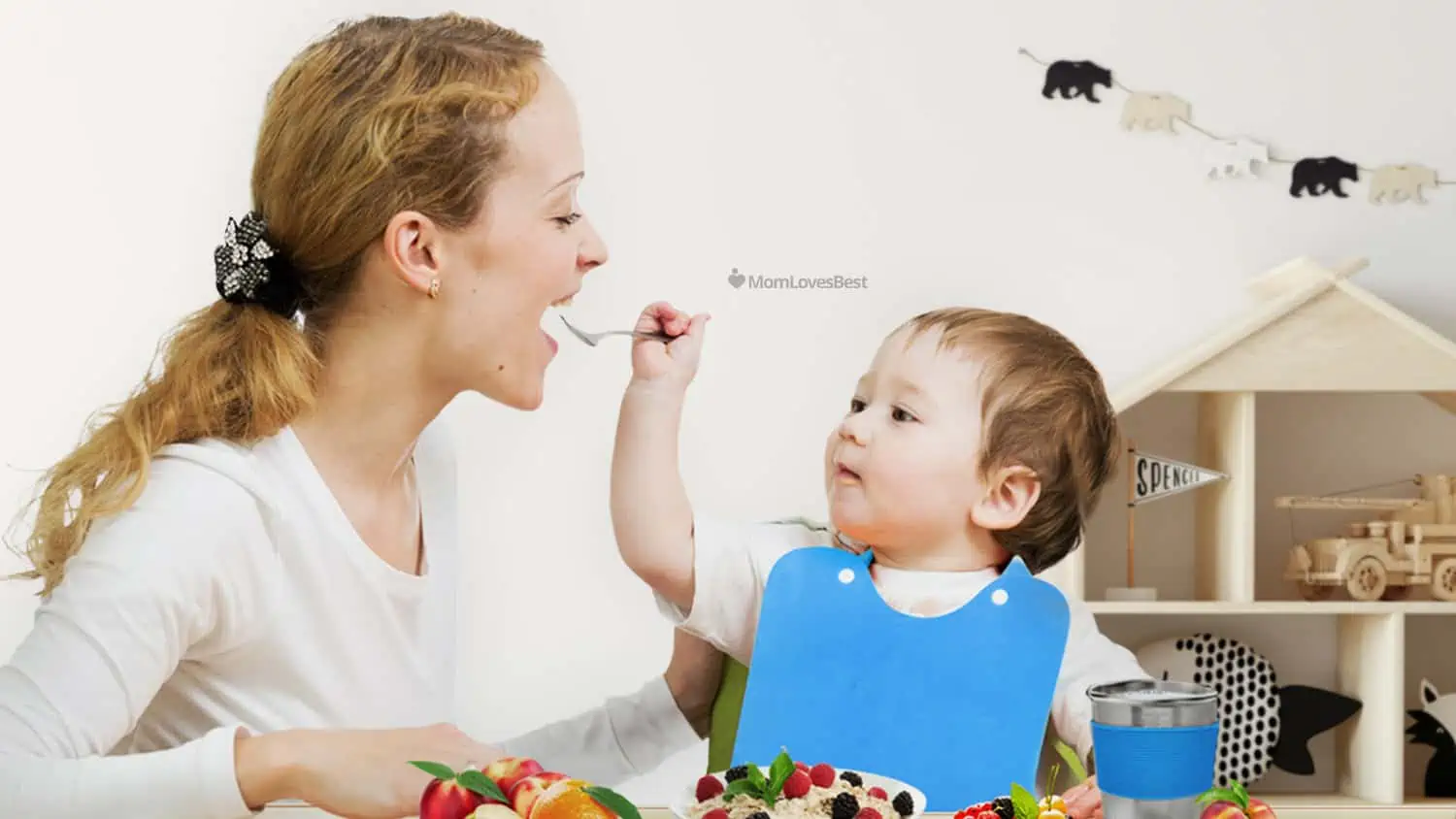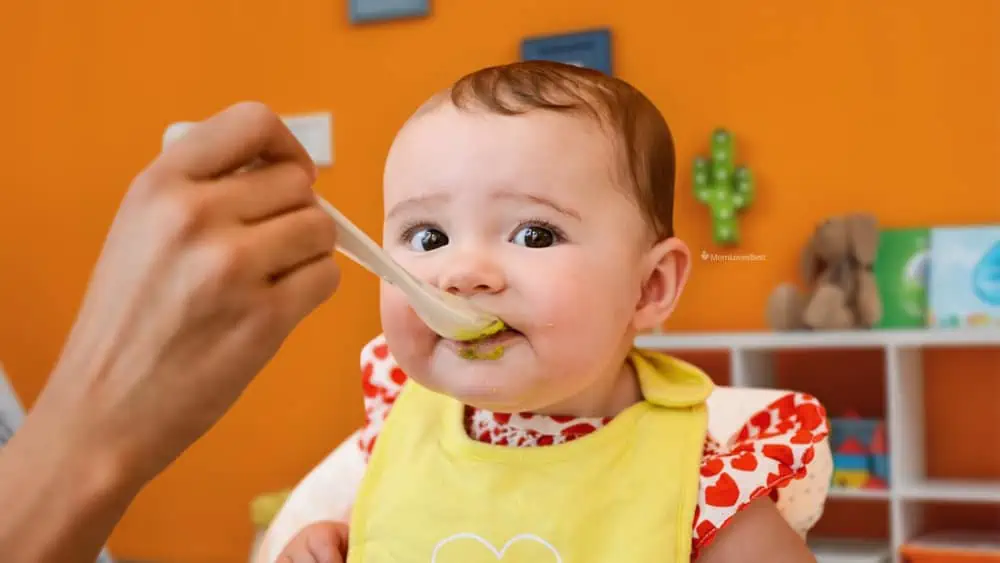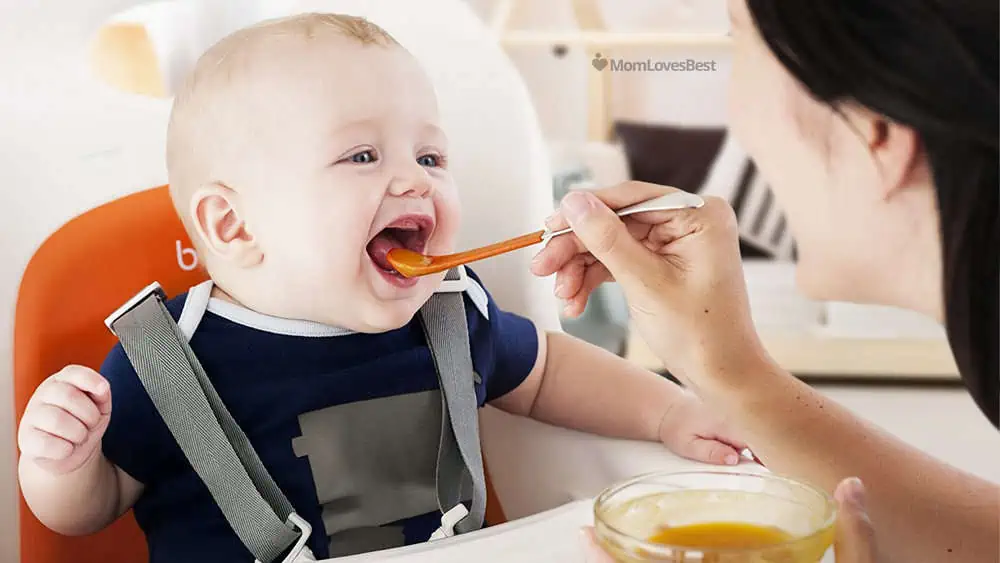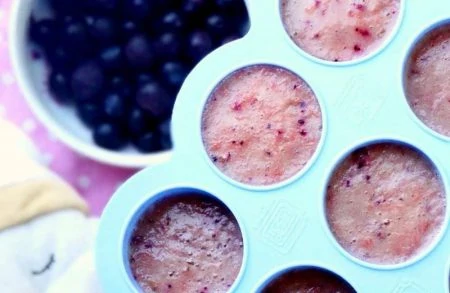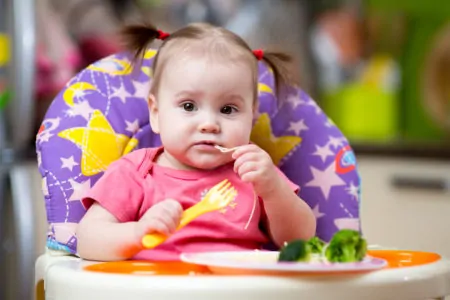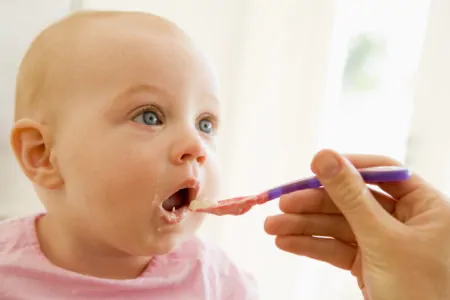Spoons might seem like simple utensils, but for a baby, they are a major introduction to the world of food. The material, shape, and size of a spoon matter significantly when it comes to your little one’s safety and comfort.
We’ve tested and analyzed the top options on the market to help you find the best baby spoons for your child’s specific needs.
- Flexible spoon helps grip food
- Teething and weaning friendly
- Helps master self-feeding
- Top-notch handcrafted box
- Made of safe materials
- Easy to clean
- Cute, minimalistic appearance
- Perfect for traveling
- Latex, lead, BPA & phthalate-free
- Soft silicone and shallow spoon
- Dishwasher safe design
- For long term use
- Very broad, easy-to-hold handle
- Designed by healthcare professionals
- BPA, lead and latex-free
- 12 spoons at an affordable price
- Assorted bright colors
- Dishwasher safe and BPA-free
- Engraved patterns
- BPA and lead-free
- Easy grip handles
- Dishwasher safe and non-toxic
- Flat and slightly angled tip
- Silicone and stainless steel
Are Baby Spoons Really Necessary?
You might wonder if a regular teaspoon from your silverware drawer works for a baby. While it is possible to feed a toddler with a metal spoon, most experts recommend specialized baby spoons.
Metal spoons conduct heat, which can burn a sensitive mouth. They also have hard edges that might hurt soft gums, especially if your baby bites down. Dedicated baby spoons are usually made of soft plastic or silicone. They are shallow, making it easier for a baby to clear the food, and they are designed to be gentle on developing teeth and gums.
Having a stash of baby-friendly utensils makes mealtime safer and easier for everyone.
Different Kinds of Baby Spoons
There are generally two categories of spoons to consider based on who is doing the feeding.
For Parent Feeding
- Silicone Spoons: These are the most common choice. Soft, food-grade silicone is gentle on gums and dishwasher safe. They are usually free of BPA and other harsh chemicals found in some plastics.
- Long-Handled Spoons: When you are the one feeding the baby, a longer handle helps you reach the bottom of baby food jars without getting puree all over your knuckles.
- Bamboo Spoons: These often feature a biodegradable handle with a detachable silicone tip. They offer a stylish, eco-friendly aesthetic but usually require hand washing.
For Self-Feeding
- Short, Chunky Spoons: Babies lack fine motor skills. Short, thick handles are easier for little hands to grasp and manipulate toward their mouths.
- Teether Spoons: Some utensils double as teethers. They feature textured surfaces that soothe sore gums and encourage babies to chew on the spoon, which builds jaw strength.
- Dip Spoons: These flat, porous spoons capture purees without the need for a scooping motion. They are excellent for the initial stages of baby-led weaning.
How to Choose Baby Spoons
To ensure smooth feedings and happy babies, consider these factors before buying.
Product Reviews
We evaluated comfort, durability, and ease of use to find the top baby spoons for every stage of feeding.
ChooMee First Spoon Learning
Best Spoon for Self Feeding
The ChooMee First Spoon bridges the gap between a teether and a utensil. The neck is flexible, allowing the spoon to bend with the contours of a bowl, while the handle remains firm for a secure grip. This flexibility helps babies scoop food even if their motor skills aren’t fully developed.
This set includes two spoons made from 100% platinum silicone. They are soft on gums and quiet when banged against a high chair tray. The unique flat head acts like a spatula and features a cutout channel. This design traps purees, so even if your baby hasn’t mastered the scooping motion, they still get a taste of food with every dip.
These are ideal for the earliest stages of self-feeding. The texture allows the spoon to hold food without balancing it perfectly, reducing mealtime frustration.
Pros
- Flexible neck bends to scoop at any angle.
- Doubles as a teether for sore gums.
- Flat head traps food without scooping.
- Made of soft, safe silicone.
Cons
- Price point is higher than standard plastic spoons.
- Best for thick purees; soupier foods may drip through the cutout.
Our Ratings
Avanchy Bamboo Baby Spoons
Best Organic Baby Spoon
Avanchy combines style with safety in this bamboo and silicone set. The handle is made from organic bamboo, offering a lightweight and biodegradable alternative to plastic. The tip is made of soft silicone, which is gentle on sensitive gums and comes in various bright colors to engage your baby.
Cleaning requires a bit more attention than all-plastic options. You can remove the silicone tip for the dishwasher, but the bamboo handle must be hand-washed to prevent cracking.
While the tips are detachable for cleaning, they fit snugly. However, supervision is key to ensuring your baby doesn’t manage to pull the tip off during a meal. The handle length is suitable for both parent-led feeding and early toddler self-feeding attempts.
Pros
- Beautiful, eco-friendly design.
- Bamboo is a renewable, biodegradable resource.
- Soft silicone tip protects gums.
- Free from BPA, PVC, lead, and phthalates.
Cons
- Bamboo handles are not dishwasher safe.
- Requires supervision to ensure the tip stays secure.
Our Ratings
Olababy Silicone Training Spoon Teether
Best Teether Spoon Combo
The Olababy Training Spoon looks like a small sprout, a design that is functional as well as cute. The leaf-shaped tip is flexible, allowing it to scoop, cut, and slice soft foods. The base is wide and suction-capable, meaning the spoon can stand upright on the table to keep the tip hygienic.
Made entirely of food-grade silicone, this spoon mimics a natural toy. It is perfect for baby-led weaning because the short, thick stem is easy for small hands to grasp. The flexibility ensures that if a baby pokes too far into their mouth, the spoon bends rather than causing a gag reflex.
Pros
- Short stem is perfect for vertical toddler grip.
- Suction base keeps the spoon upright and clean.
- Double duty as a safe teether.
- Dishwasher safe and easy to rinse.
Cons
- Silicone can absorb strong food odors (like soap or garlic).
- The flexible scoop is less effective for harder foods.
Our Ratings
Kirecoo Baby Fork and Spoon Set
Best Spoon and Baby Fork Set
The Kirecoo set includes a spoon and fork along with a travel case, making it an excellent choice for dining out. The utensils feature thick, non-slip handles designed specifically for toddler hands that are still developing dexterity.
The fork is technically a spork with rounded tines. It allows toddlers to practice stabbing solid foods without the risk of sharp points injuring their mouth or face. A specialized “choke barrier” design on the handle prevents the baby from putting the utensil too far down their throat.
These utensils are free from latex, lead, BPA, and phthalates. The bright colors help keep babies interested in the task at hand.
Pros
- Includes a travel case for hygiene on the go.
- Choke protection barrier for added safety.
- Rounded fork tines prevent injury.
- Thick, non-slip handles for easy gripping.
Cons
- Spork-style fork struggles to pierce harder foods.
- Only includes one set per purchase.
Our Ratings
BabieB Soft-Tip First Stage Silicone Infant Spoons
Best for Infants
Infants starting solids at 4 to 6 months need specialized tools. The BabieB spoons are designed with a shallow bowl that holds just the right amount of puree for a beginner eater. This prevents parents from accidentally overfeeding a mouthful, which can cause gagging.
The tips are made of soft silicone that is gentle on gums that may be sore from teething. The handle is long enough for parents to comfortably hold but features a non-slip grip. These spoons also have a slight flexibility, allowing you to scoop food from bowl edges easily.
The set includes five spoons in various colors. They are dishwasher safe, though the clear silicone tips may stain over time with heavily pigmented foods like carrots or sweet potatoes.
Pros
- Shallow bowl prevents overfeeding and choking risks.
- Soft silicone is gentle on delicate gums.
- Long handle works well for parent-led feeding.
- Dishwasher safe for easy cleanup.
Cons
- Clear tips are prone to staining from orange foods.
Our Ratings
Kizingo Curved Baby Spoon
Best Ergonomic Baby Spoon
The Kizingo spoon features a unique, sharp curve designed to work with the way toddlers naturally hold utensils. Most toddlers grab a spoon in a fist; this design angles the bowl of the spoon directly toward their face, reducing the need to twist the wrist.
Developed by nutritionists, this spoon aims to promote independent eating. The handle is short and wide, offering a stable grip. Because of the curve, the spoon is also less likely to flip over when resting in a bowl.
Note that these spoons are directional. You must buy the version specific to your child’s dominant hand (left or right).
Pros
- Curved design bypasses the need for complex wrist motion.
- Short, wide handle stabilizes the grip.
- Made in the USA from FDA-approved plastic.
- Dishwasher and microwave safe.
Cons
- You must choose between right-handed or left-handed models.
- Higher price point per spoon compared to multi-packs.
Our Ratings
The First Years Take and Toss Spoons
Best Plastic Baby Spoon
Sometimes quantity is quality. The Take and Toss line is designed to be durable enough to reuse but cheap enough to lose without heartbreak. This pack includes 16 spoons, ensuring you always have a clean one available.
These are simple, hard plastic spoons. They are lightweight, BPA-free, and dishwasher safe. While they lack ergonomic curves or soft silicone tips, they are functional and practically indestructible.
They are excellent for travel, daycare, or keeping at a grandparent’s house. If you leave one at a restaurant or park, it’s not a big deal.
Pros
- Extremely affordable bulk pack.
- Durable enough to reuse, cheap enough to toss.
- Dishwasher safe and BPA-free.
- Great for travel and daycare.
Cons
- Hard plastic is not as gentle on gums as silicone.
- Smooth handles can be slippery for greasy hands.
Our Ratings
ChillOut Life Kids Utensils Silverware Set
Best Stainless Steel Utensils
The ChillOut Life set helps toddlers transition to “real” silverware. This set includes spoons, forks, and butter knives made from high-quality stainless steel. They are non-toxic, rust-resistant, and completely dishwasher safe.
The edges are smoothed down for safety, ensuring no sharp points can hurt your child. However, the metal is hard, so this set is best reserved for children who have mastered the basics of eating and are no longer teething.
The handles feature engraved fruit designs, adding a touch of fun without using paint or stickers that could peel off over time.
Pros
- Durable stainless steel lasts for years.
- Mimics adult cutlery to encourage table manners.
- Includes blunt knives for practicing cutting.
- Engraved designs won’t fade or peel.
Cons
- Metal conducts heat and cold more than plastic.
- Not suitable for babies who still bite their utensils.
Our Ratings
Beaba First Stage Baby Feeding Spoon
Best Silicone Spoons
Beaba offers a premium silicone spoon designed specifically for the parent-led feeding stage. The ultra-supple silicone tip is extremely gentle, ensuring that even enthusiastic eaters won’t hurt their gums if they chomp down.
The handle is long and ergonomically shaped for adult hands, making it easy to navigate around a high chair tray. The spoon bowl is very shallow, which is excellent for portion control with early eaters. It ensures the baby can clear the entire spoon easily.
This set is free from BPA, lead, and phthalates. The soft material makes it safe for babies to chew on, acting almost as a secondary teether during meal times.
Pros
- Ultra-soft silicone is superior for gum safety.
- Long handle keeps parents’ hands clean.
- Shallow bowl prevents gagging on too much food.
- Dishwasher safe.
Cons
- Lighter colors stain easily with tomato or carrot-based foods.
- Heavy handle can cause the spoon to tip out of small, light bowls.
Our Ratings
Boon Swap Baby Utensils
Best Small Baby Spoon
The Boon Swap spoons are slim, sleek, and highly functional. They feature a unique dual-ended design: one end is food-grade silicone, and the other is stainless steel. This allows you to switch textures based on what your baby prefers that day or what kind of food you are serving.
The spoon heads are small and angular. The flat edge is perfect for scraping stray food off your baby’s face or cleaning the last bit of puree out of a jar.
Because they are narrow, they are great for babies with smaller mouths who struggle with wide, round spoons.
Pros
- Dual-ended design offers two material choices.
- Flat tip is excellent for wiping food off faces.
- Narrow profile fits small mouths easily.
- Angled to scrape jars effectively.
Cons
- Some parents find the angle too steep for liquid foods.
- Metal end might be too hard for young teething babies.
Our Ratings
How Do I Spoon Feed My Baby?
Proper technique makes mealtime less stressful. First, ensure you wash any new spoons before use.
Sit your baby upright in their high chair. If they are watching your food and opening their mouth, they are likely ready. Scoop a small amount of food, don’t overload it. Bring the spoon to their lips and wait for them to open up.
Do not force the spoon in or scrape it against their upper gum, as this can be uncomfortable. Instead, place the spoon on their lower lip or tongue and let them close their mouth around it. Gently pull the spoon out.
Expect a mess. Babies are learning, and much of the food will end up on their chin or bib. This is normal. Stop when your baby turns their head away or loses interest.
When Can I Introduce a Baby Spoon?
The American Academy of Pediatrics recommends introducing solid foods around 6 months of age. However, every child develops differently.
You can introduce a spoon as a toy earlier, around 4 months, to let them get used to the texture. For actual feeding, look for these signs of readiness:
- Head Control: They can hold their head up steady without support.
- Sitting Up: They can sit upright with minimal assistance.
- Lost Tongue-Thrust: They don’t automatically push food out of their mouth with their tongue.
- Interest: They watch you eat and reach for your food.
When Should Babies Spoon Feed Themselves?
Self-feeding is a complex skill involving hand-eye coordination.
9 to 12 Months: Babies will grab the spoon, bang it, and try to bring it to their mouth. It will be messy, and they won’t get much food in. This is the practice phase.
12 to 15 Months: They will start to get the spoon into their mouth more consistently, though scooping is still hard. Pre-loading the spoon for them helps.
18 to 24 Months: Most toddlers become proficient with a spoon around this age. They can scoop food and eat with reasonable accuracy.

